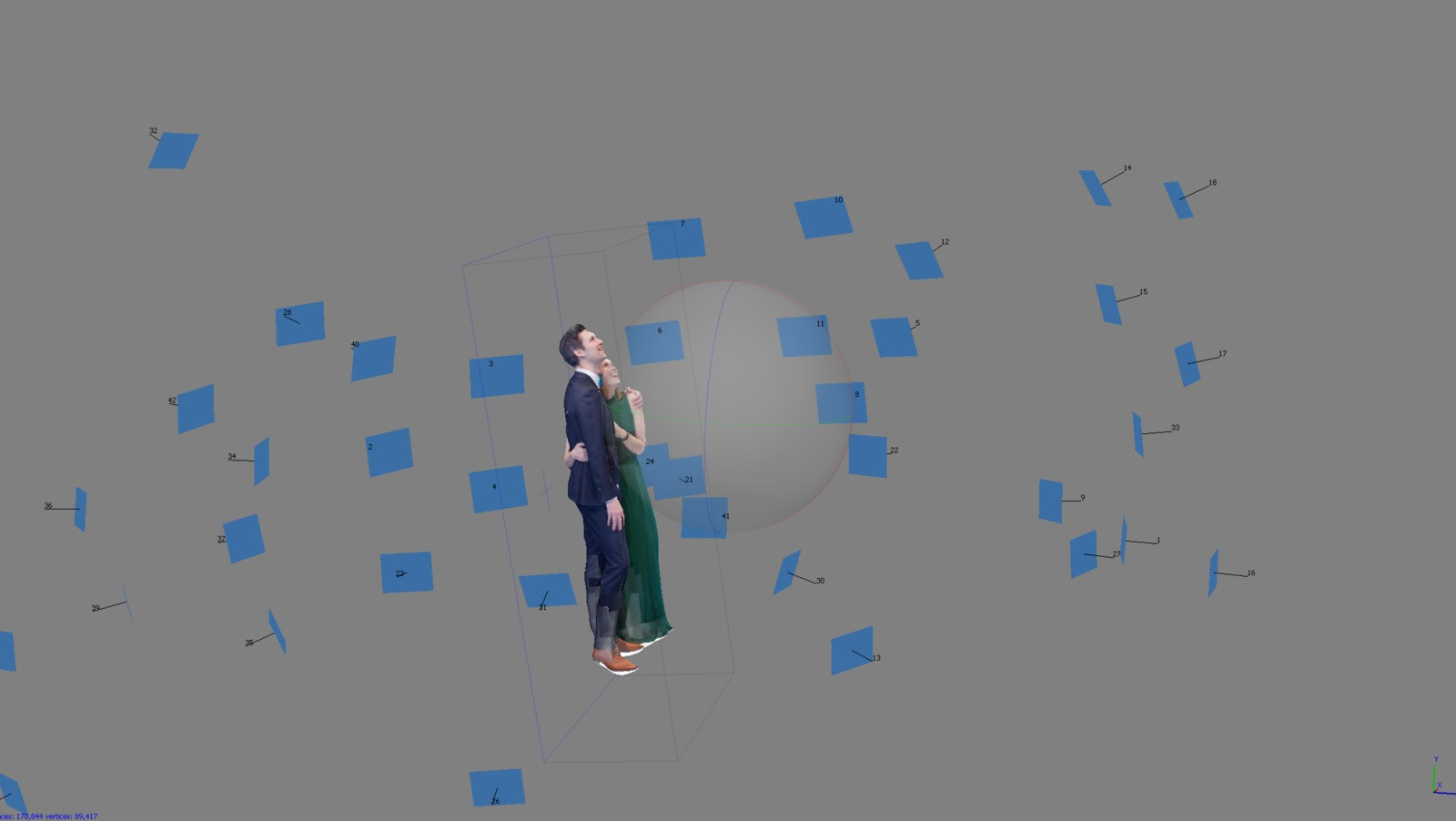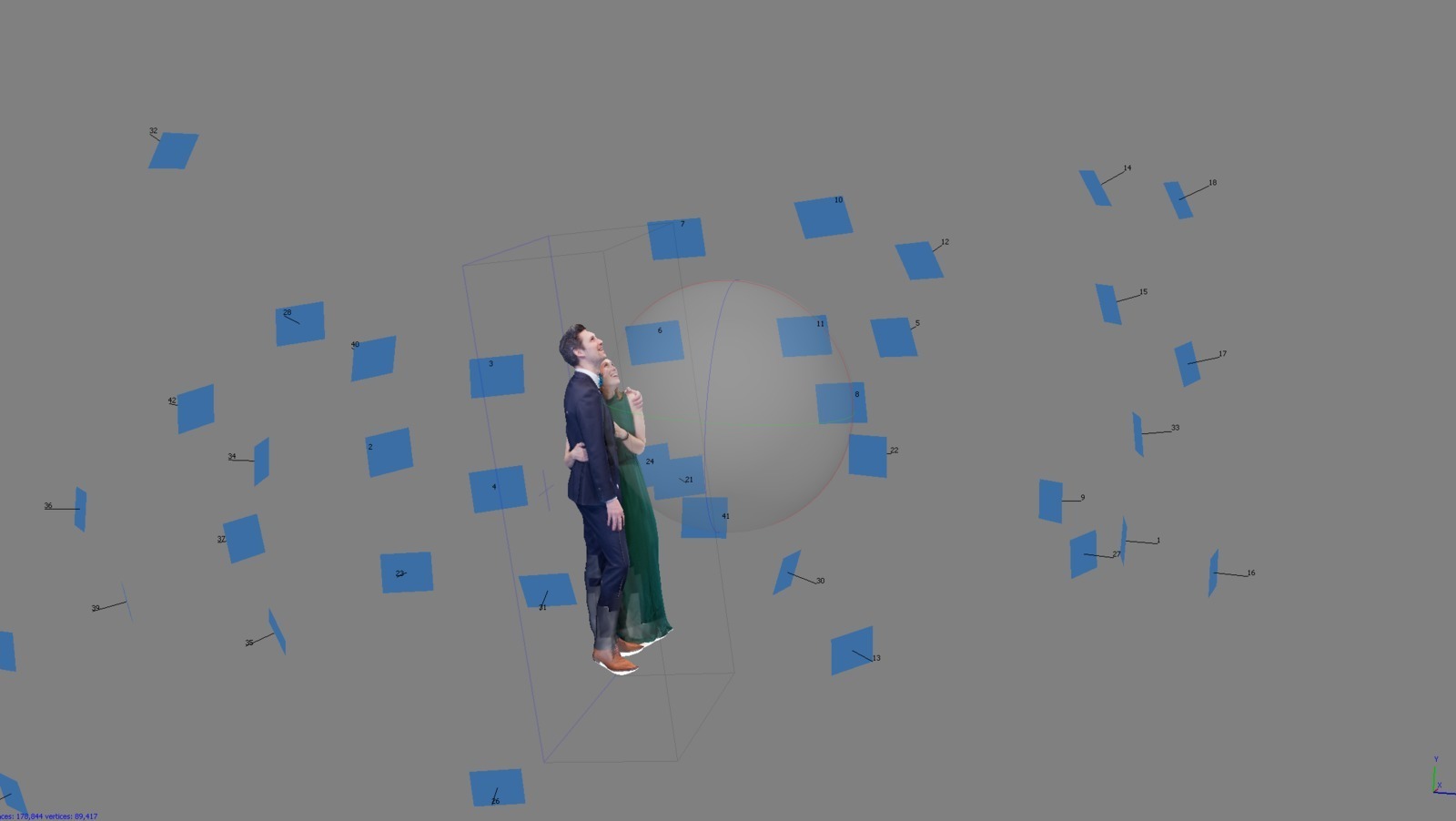Essay by David Claerbout Unseen Sound
Unseen Sound
Admittedly, the so-called soundtrack in Sections of a Happy Moment and Algiers' Sections of a Happy Moment can raise eyebrows, as it is music which is not appreciated for its musical qualities but for superficial therapeutic effects. I felt exhilarated by the thought of showing this to a public of serious contemporary art connoisseurs, who would surely suggest a more sophisticated soundtrack for the work.
Nowadays I do not have to defend my choice of this music, which is considered kitsch, but while making the pieces I was preparing for some kind of public trial and enjoying the idea of it. When it comes to arguing with the style police, style always wins, especially if an artist's motivation is compliant, and no irony is detected and neither are we dealing with pop art. After seeing these two works at Garage it might surprise some people to read that I am mostly opposed to the tradition of acoustically induced emotions in film installations. In both s.o.h.m pieces the “muzak” improvizations perform the task of providing pseudo-continuity in what is otherwise a very fragmented sequence of moments. The sequence (which resembles a digital slideshow) and the sound never really seem to meet, nor is one moment more important than another. The fragmentation does not try too hard to cause disorientation, it is slow, allows for scrutiny.
No Sound
Both The Quiet Shore and the “confetti” piece are mute in the sense that these films do not produce any sound, however that does not describe very well my intentions with regard to silence in film. Let’s assume that silence is the absence of noise. Following this logic makes silence the passive version of the active—noise, sound—or to put it in binary terms: sound is active (1), silence is passive (0). Thus, silence is subordinated to sound, may be the lesser version of it, maybe it is noise with a handicap, unable to be noise.
A rapid reality check suggests that sound and the moving image combined retain our attention longer than soundless (0) moving images can. In The Quiet Shore and the “confetti” piece I aim to produce a quasi-tactile volume out of muteness, turning the passive (0) into an active (1) or the absence of sound into a presence of silence. Muteness and duration are both treated as tactile, effective transformers of an image. No need to plot and conclude, no need to trigger and deliver.
Both works, and indeed all pieces selected for the exhibition, are composed around a frozen instant, making them explicitly recognizable as stills, as if to justify their silence. In both works it is the stills that make the absence of sound explicit (a smash and a scream), which are situated toward the end of the film, although one cannot speak of an end” stricto sensu but rather the end of some time spent “with” the film, not “by” the film.
In The Quiet Shore there is a young fellow splashing his hands in the water—experienced as ice!—and in the “confetti” piece, again, a young boy, this time screaming out, absurdly, against the lightness of the confetti particles. Silence is often wrongly subordinated to sound, just as slow motion is subordinated to action. It is considered less potent at representing an animated world (in motion, in transformation, change) and therefore resembling silence. With both of my preferred categories, the certitude of animation, life, rhythm falls away.
Sculpting in Duration (Monochrony versus Heterochrony)
In a time-pressed economy, monetization and organization means that we came to think of time as a package of marketable units. Almost unavoidably, the frustration of being unable to grasp and to hang onto these particular shares produces nostalgia and the primacy of youth. Here too, when we read in binary terms, younger is active (1) while older is passive (0). As a young artist my ambition was to produce work that lasted longer than tolerable in clock time, driven by the availability of time as a product of wealth. That, together with the objectification of video projection—which delivered me from painting—was the drive behind sculpting in duration. On the surface, monochronic 24 frames per second film time could be considered something to fight against, but it soon became my beloved enemy. Monochrony—a neologism I coined in reply to someone using the term heterochrony, I believe erroneously, as a pluralistic alternative to clock time—is the root of many riches and many problems. Monochrony is for time what image culture is for the experiential. Both categories offer a dependable, redistributable, flat version of something biologically complex. Something ungraspable is turned into something manageable and exploitable. Both have incredible transformative power when their abstract logic is followed, but likewise both clock time and image culture have devastating powers when mistaken for the real thing. What is the real thing?
Dark Optics
For those who are accustomed to the work I make it may seem that I have mainly worked with lens-based media, and I am often described as an artist working at the intersection between the still and the moving image, but from the age of 16 to 28 I was immersed in painting, drawing, and most of all printmaking, in such a way that it seemed that was all I would do. When, around 2010, my studio team and I started researching for the film installation Travel (completed in 2013), we were faced with a steep learning curve in virtual film making. The works in Unseen Sound date from right before that period, with the exception of the “confetti” piece (2018). During the production process I started to develop the “three Cs” of lens less optics. They echo, by coincidence, the well-known “three Cs” of cinematography. The three Cs of dark optics are: concept, conversation, and consensus. They encompass a gradual replacement of experiential, accidental, lens-based image culture—an age of wonder which resisted representation—into a unified three-dimensional space in which every point has a fixed (dead) address. Variables of a concept (c1) simulate contingency, which is nothing other than known conversations (c2) dealing with “intolerable” complexities, solving them in a consensus (c3) on how to represent concepts. Known knowns, dealing with themselves, about themselves, coming up with solutions that are entirely satisfying for themselves, in other words: pure representations.
The initial hypothesis of dark optics, which I elaborated in my 2016 essay “The Silence of the Lens,” was that the era of light, optics, and camera is coming to a close after having been an important—if not the most important—confidence system from 1850s until its demise in our time. The demise itself is hardly noticeable on the surface. The camera, including the roll of celluloid, the graciousness of the incoming light, and the almost alchemical, magical result of fixation was, I believe, the love child of the enlightenment (an aging lady by the 1850s) and the industrial revolution (her much younger lover). For centuries, it was expected that optics, like reason, equaled the clarity of knowledge. A recent exhibition of the 15th-century Van Eyck brothers in Ghent showed for all to see the age of the exchange of confidence between optical truth and truth in knowledge. And it is even older than that. The anti-ocularcentric critique may deplore the dominance of sight among our senses. When we think of our five senses as individual gateways to our brain, that may sound true, but it gets a little confusing once we realize that, in evolution, our eyes and our skin are close relatives. Light sensitivity in at the cellular level is one of the earliest orientation and survival methods for life on earth, employed when the time came for organisms to move about and stay safe while doing so. We see through our skin.
With dark optics, the question arises as to what may replace the “mutual authentication” between, for example, the photographer, the photographic apparatus, and that which is being photographed. I think that this triumvirate provided an optical confidence (or truth) system that simply did not exist before the development of the (industrially-produced) photographic image in the 1850s. I argue that the demise of a lens-based confidence system has an uncanny resemblance to pre-1850s use of—and relationship to—images, text, and commands, abandoning resilience against their status of fabrications and abstractions and with loss of optical familiarity and binding power.
I feel that this collapse is manifest in our time in social, economic, and political life, not as a collapse of confidence in the camera but as a collapse of truth and trust. With my work, I try to appropriate, in video, the most cyclical of phenomena—and often the least appreciated—such as the movement of the sun in relation the earth, shadows, wind in a tree, breathing, seasons, because those phenomena remain once the light goes out: they are vivid, regardless of memory or narrative.

